Once known for its provocative and often intimate images of iconic models like Kate Moss and Alek Wek, the Pirelli calendar has become known for serving up some of the fashion industry’s most praised cultural imagery—and in recent years, for bending the rules on how we view womanhood and define “sexy.”
In 2016, with legendary photographer Annie Leibovitz behind the lens, “The Cal” celebrated women who’ve made their mark in their respective industries—including the now 80-year-old chairman of the Museum of Modern Art, Agnes Gund, and comedian Amy Schumer, who opted to pose nude, exposing her natural, un-photoshopped curves. Similarly, a year later, Peter Lindbergh’s vision involved shooting Academy Award-winning actors, like Julianne Moore and Nicole Kidman, makeup free, with no photo retouching.
And now in 2018, under the creative direction of renowned fashion photographer Tim Walker and British Vogue’s first black editor-in-chief, Edward Enninful, Pirelli has for the second time featured an all-black cast. But this is the first time in the company’s history—and perhaps ever—that audiences have seen the visual retelling of the classic Alice’s Adventures in Wonderland.
For London-based Walker, who is now in his 40s, it was a moment from his childhood that made him realize the importance of making racial diversity a priority through his work. “I took a picture of Roald Dahl’s wife, and she was telling me that [he] originally wrote Charlie in Charlie and the Chocolate Factory as a little black boy,” he recalls. “And I was just thinking, God, you know, if Charlie and all the Bucket family had been black, it would have been so incredible for a black friend of mine at school to have seen himself as a protagonist in a story.”
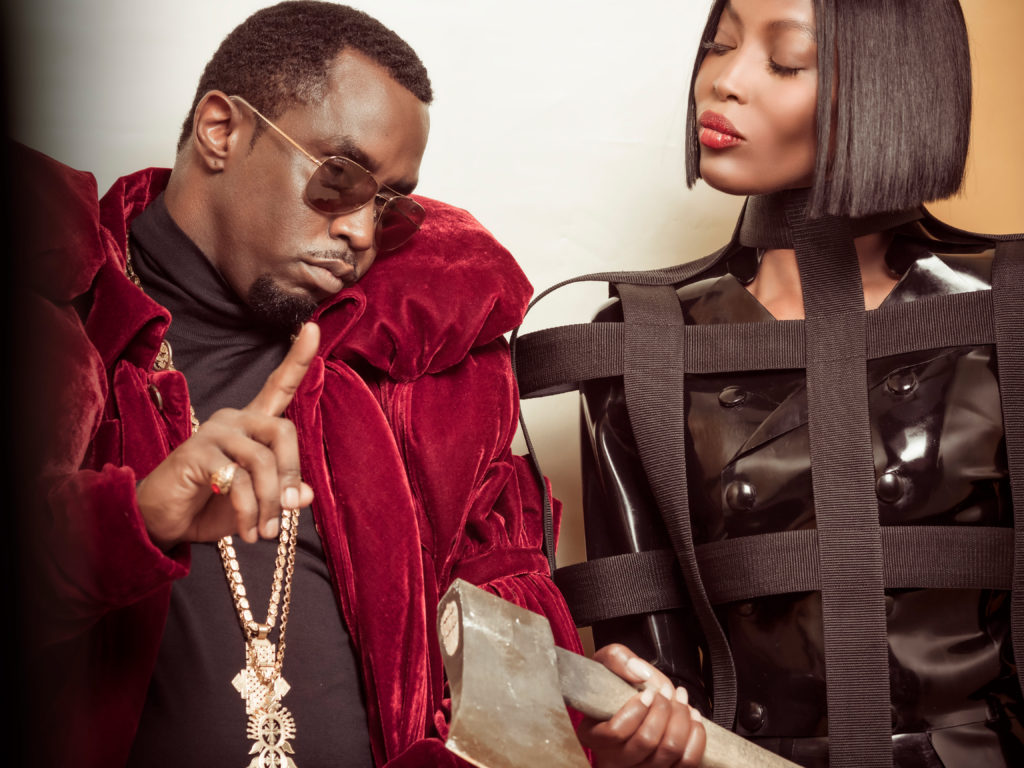
Supermodel Naomi Campbell, who wields an axe in her photos as the royal beheader, alongside her “brother” Sean Combs, has been a very vocal advocate for racial diversity in fashion over the years, and asserts the importance of breaking mental boundaries when it comes to how we imagine characters. “Alice in Wonderland is a fantasy,” Campbell exclaims. “We think that it always has to be white. It’s taken, what? Until 2017 for us to look and say, ‘Oh it could have been black!’ It’s just a matter of our minds and what we allow and what we limit. And I don’t have a limit in my mind.” And neither did Walker—in more ways than one.
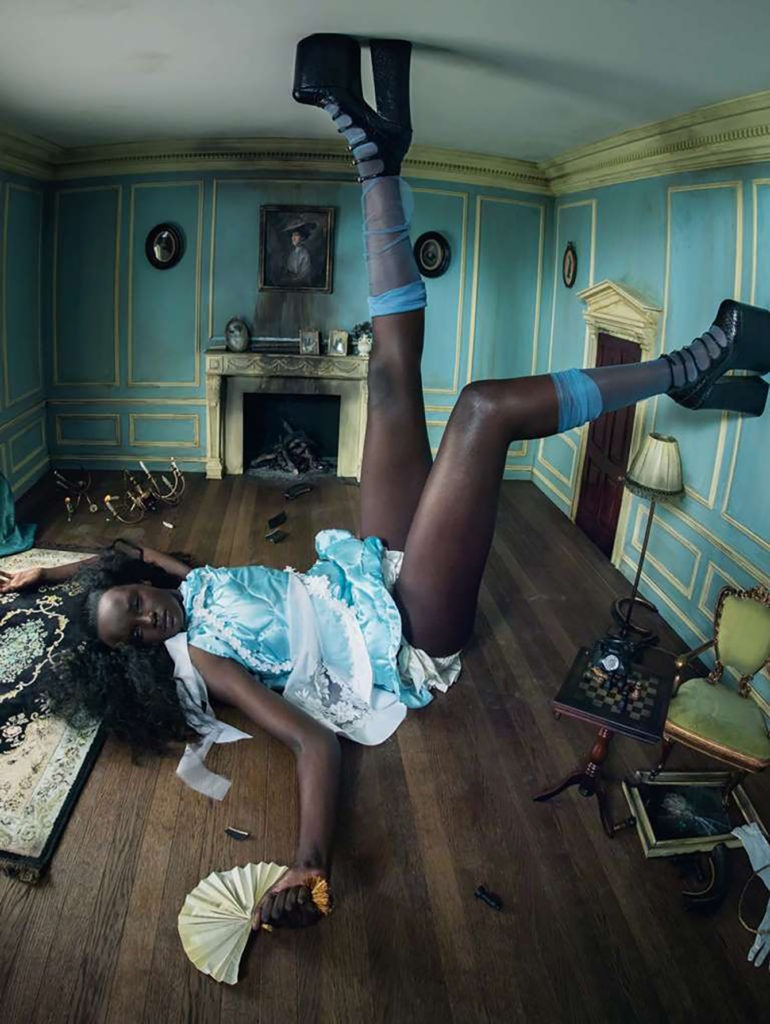
While Pirelli typically casts well-known models and public figures, this year, many newcomers, including Sudanese–Australian model Duckie Thot (who portrayed Alice) took centre stage, along with women like lawyer-turned-model Thando Hopa and female genital mutilation survivor and activist Jaha Dukureh. Each of these women, regardless of accolades, played an important role in this piece of fashion history.
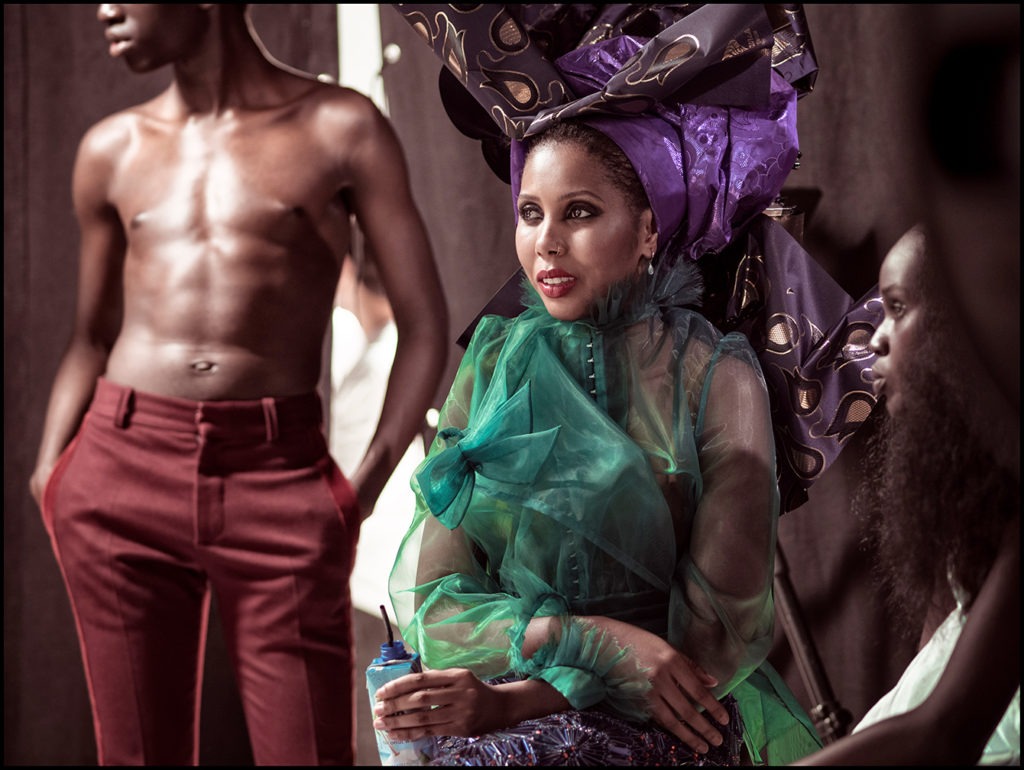
Hopa, who portrayed the Princess of Hearts alongside actor Whoopi Goldberg, says she often felt visually underrepresented growing up as a black woman with albinism. “For me, when you really understand the importance of representation, is when you didn’t have representation, then you understand the effect of it,” the South African native shares. “Race is just a template for the bigger message that is the importance of representation,” she adds. “It really could have been an Asian cast or any cast—still, the message endures.”
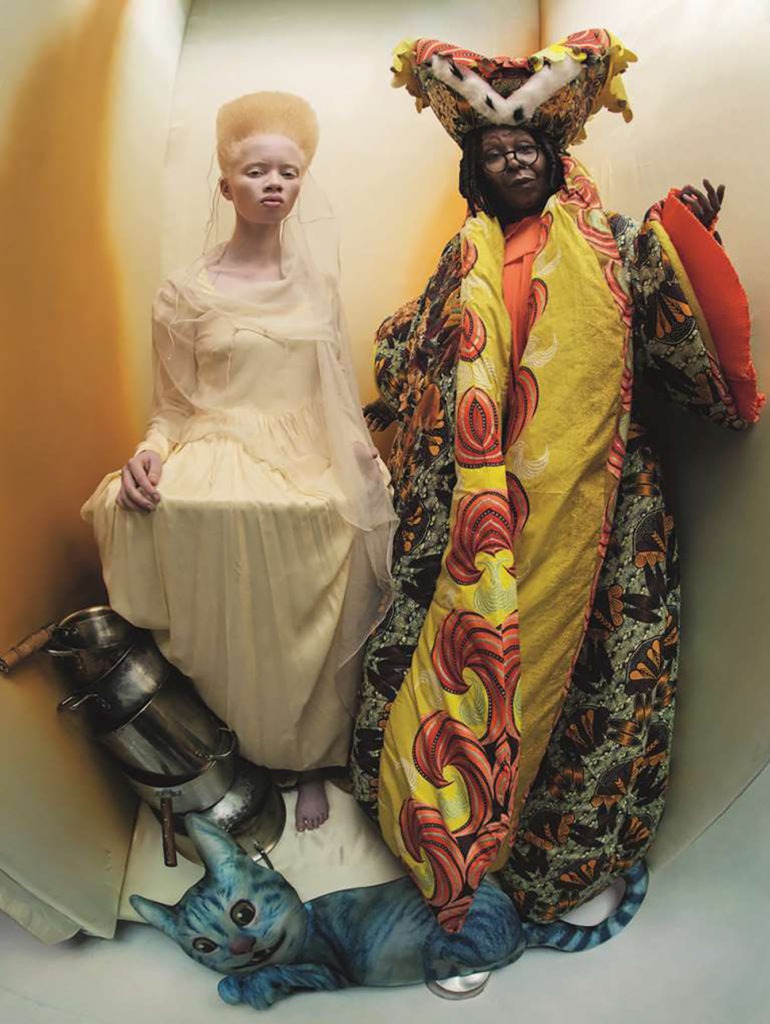
For Dukureh, she expressed gratitude for being able to break free from what she says is the “victim image” she has been so long associated with. “For Pirelli to give me this platform…shows those young girls that their stories matter and their voices matter,” she says. “So, it’s not so much about me being here, but it’s about those people and those millions of girls seeing themselves in me.”
As for Thot, she states it was “a blessing” to be Alice—a character she claims to deeply relate to. The 22-year-old even shared that she cried tears of joy once the shoot wrapped. “Identity was a really confusing thing for me,” the former Australia’s Next Top Model contestant confesses. “I didn’t understand who I was. And I knew that it should be more. And although it was hard for me, there was something that made me very driven to find it…my life, where I’ve been, what I’ve done, my curiosity for things. I just always wanted more—and so did Alice.”
Walker saw these traits in Thot as well. He also saw the fact that she was still earning her stripes in the industry as a strength. “It was like there was a mystery to her,” he says. “I think for Alice, you don’t really know who she is, there’s no back story. When you come into Alice in Wonderland, she’s falling asleep by a lake and then you’re down a rabbit hole. I thought it was really important to maintain that mystery.”
Campbell, the fashion veteran of this year’s group, has been featured in the calendar twice, prior to this year. Her first opportunity to work with Pirelli came when she was only 16 years old with the company’s first-ever, all-black cast, shot by Terence Donovan. The second opportunity came in 1995, when she worked with photographer Richard Avedon.
“They’ve all been so different, but iconic in their own way,” the 47-year-old shares. “And their message…has to follow the message of what’s going on in the world, what people are talking about, what’s happening today.”
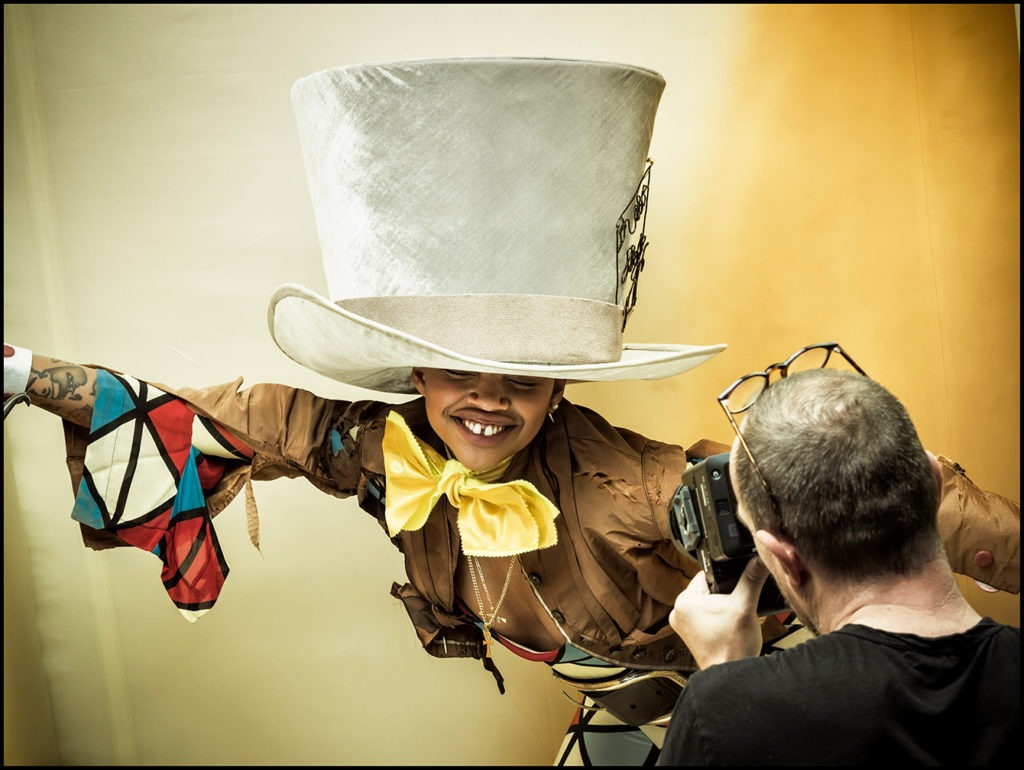
And what’s happening, she believes, is a shift in the way the fashion industry celebrates cultural diversity. “I’ve been frustrated for a while, alongside Bethann [Hardison] and Iman,” she says. “But I do feel this year has been a significant change. And I do feel also
that it’s not a change for trend—it’s a change to stay.”
So, for the next class of models, and the women and girls who will admire them from afar, what type of environment does Campbell envision moving forward? “A diverse, free world,” she exclaims. “Where people get an opportunity and a chance because they’re great at what they do. Not because the colour of their skin isn’t likened to someone else who has the power to give them the opportunity,” she continues. “We have to give hope; we have to think about the next generation looking at that. If I don’t use my voice to do that, then what am I going to do?”
Images courtesy of Tim Walker and Alessandro Scott.
